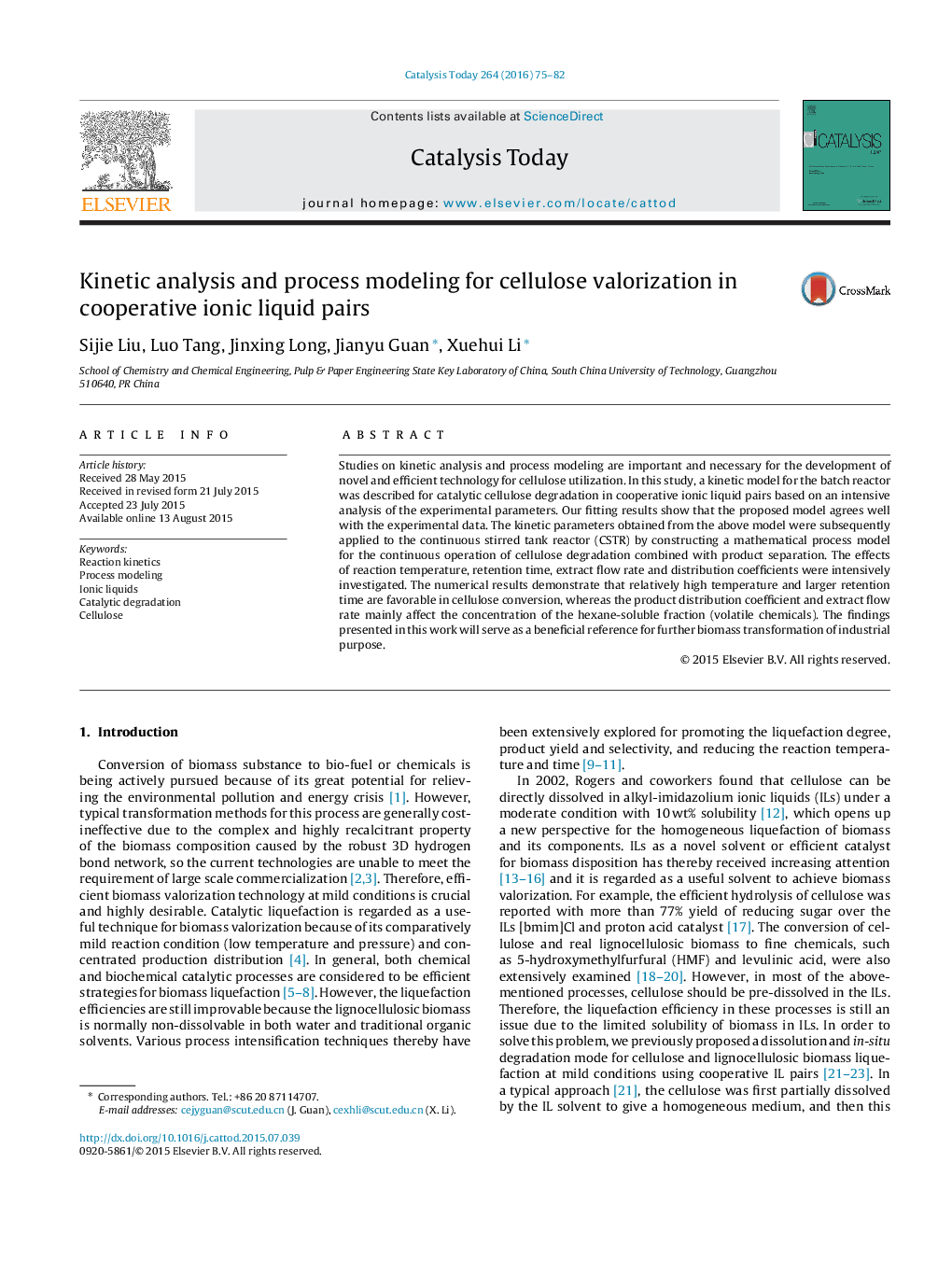| Article ID | Journal | Published Year | Pages | File Type |
|---|---|---|---|---|
| 53299 | Catalysis Today | 2016 | 8 Pages |
•A two-step kinetic model for cellulose degradation in ILs was formulated.•An intensification process for continuous cellulose degradation was proposed.•A mathematical model was built to describe the process in CSTR.•Temperature and retention time have obvious effects on cellulose conversion.•Distribution coefficient and extract flow rate mainly affect product distribution.
Studies on kinetic analysis and process modeling are important and necessary for the development of novel and efficient technology for cellulose utilization. In this study, a kinetic model for the batch reactor was described for catalytic cellulose degradation in cooperative ionic liquid pairs based on an intensive analysis of the experimental parameters. Our fitting results show that the proposed model agrees well with the experimental data. The kinetic parameters obtained from the above model were subsequently applied to the continuous stirred tank reactor (CSTR) by constructing a mathematical process model for the continuous operation of cellulose degradation combined with product separation. The effects of reaction temperature, retention time, extract flow rate and distribution coefficients were intensively investigated. The numerical results demonstrate that relatively high temperature and larger retention time are favorable in cellulose conversion, whereas the product distribution coefficient and extract flow rate mainly affect the concentration of the hexane-soluble fraction (volatile chemicals). The findings presented in this work will serve as a beneficial reference for further biomass transformation of industrial purpose.
Graphical abstractFigure optionsDownload full-size imageDownload high-quality image (110 K)Download as PowerPoint slide
